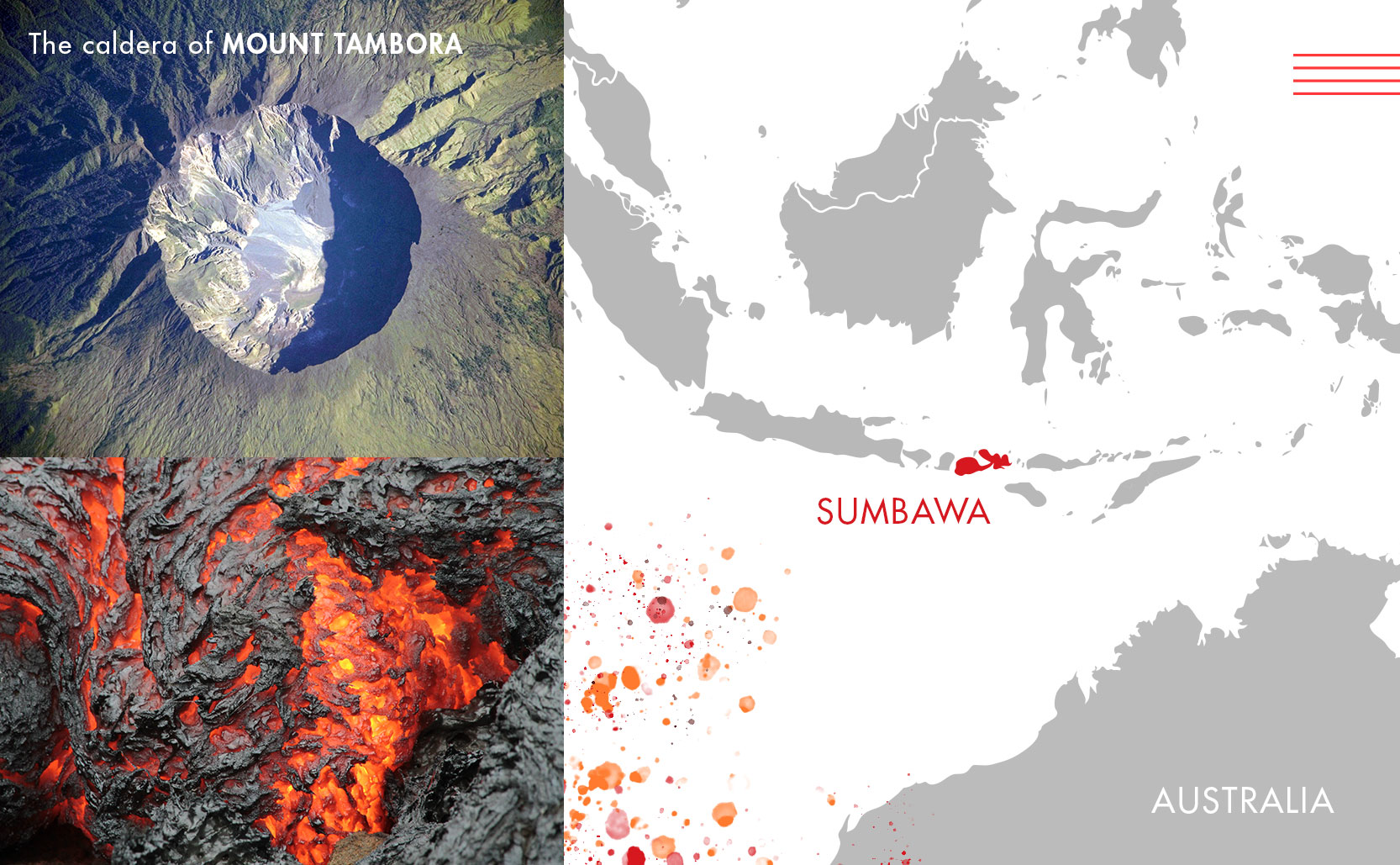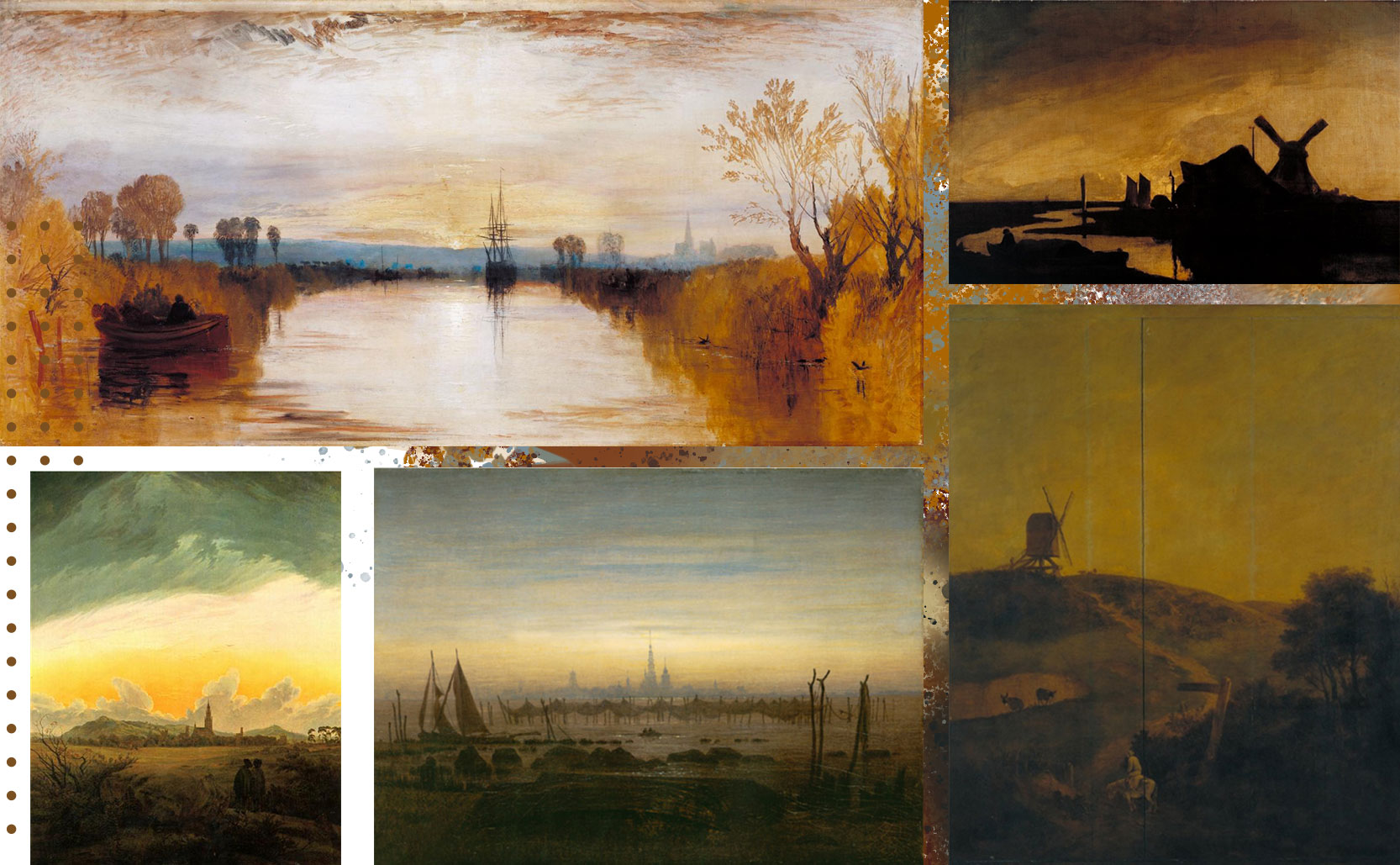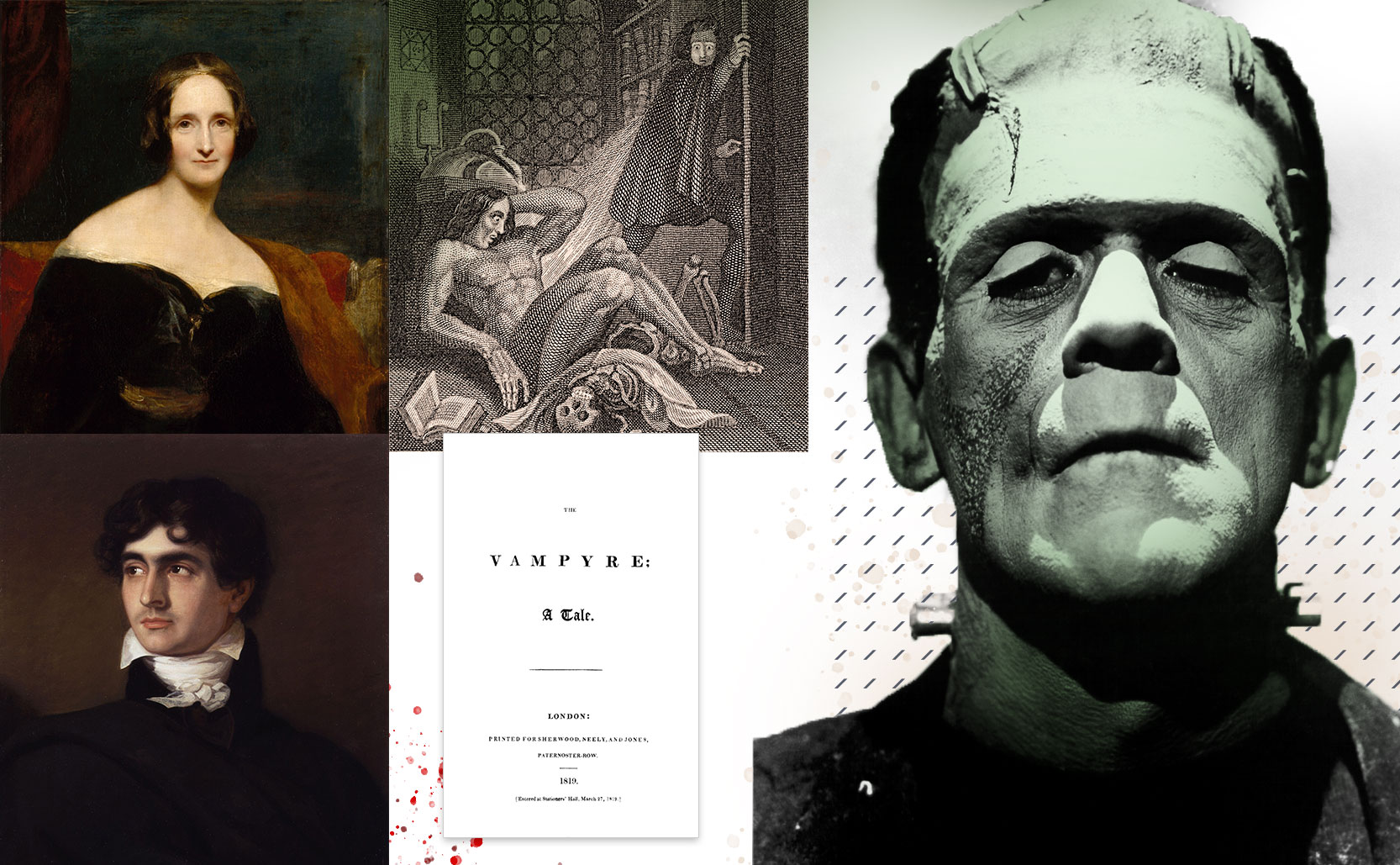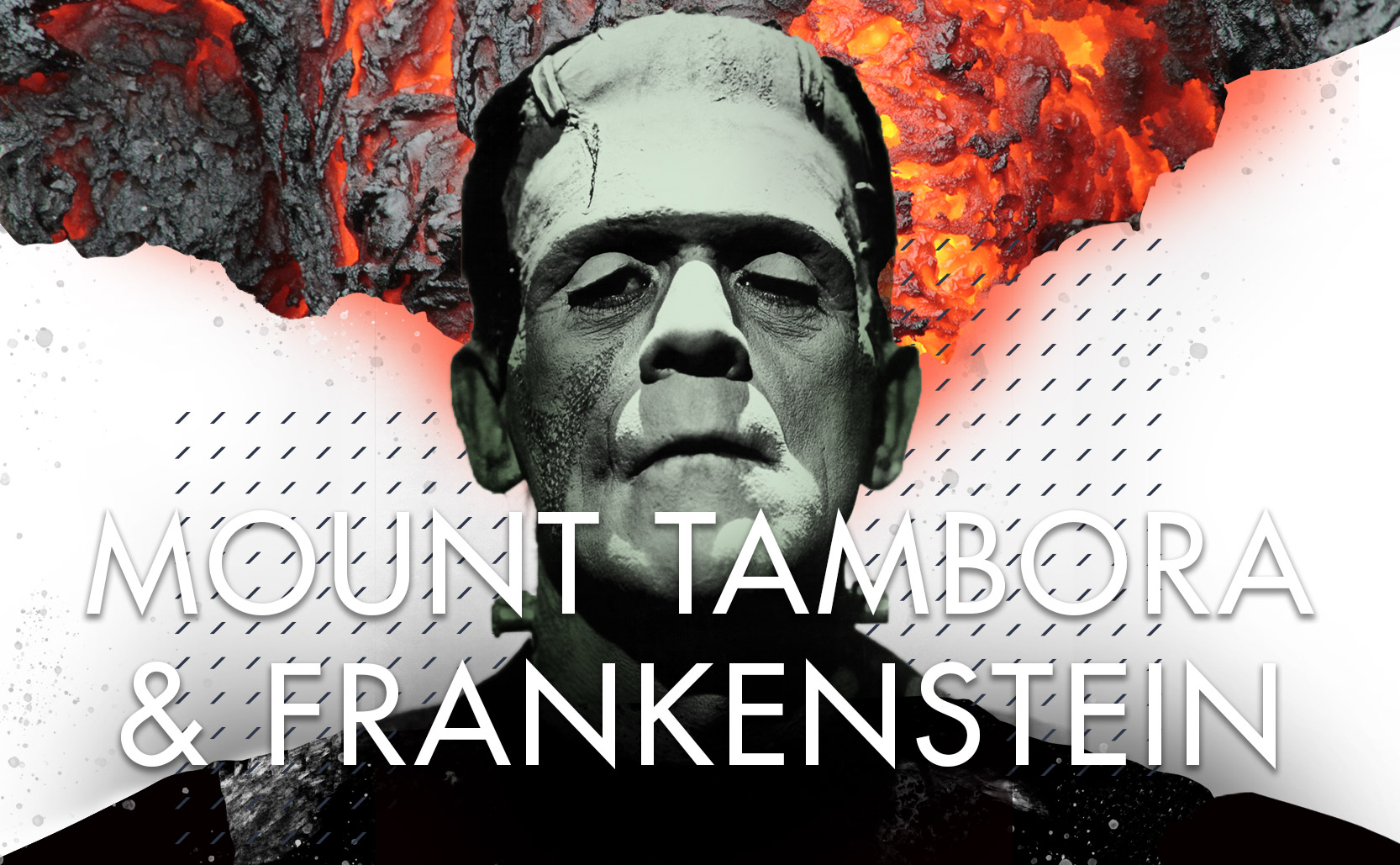The eruption of Mount Tambora in 1815 led to the creation of Frankenstein.
Mount Tambora is a volcano on the island of Sumbawa, Indonesia and on April 5, 1815 it began a monumental multi-day eruption. The eruption is still the largest volcanic eruption in recorded human history, the estimated equivalent of a 14,000-megaton nuclear bomb. It was so powerful it removed the top 4,750 feet of the volcano, reducing it to 9,350 feet tall as it sent more than 38 cubic miles of debris into the sky. The explosion was so loud it was heard 1,600 miles away, the equivalent of an explosion in Philadelphia being heard in Denver.

The eruption immediately killed over 10,000 people on the island. All of the island’s vegetation was destroyed and the water was poisoned which led to starvation and disease killing a further 37,825 Sumbawanese people. As the tsunami it generated, and the ash it expelled, spread to other islands, it killed off more vegetation and more people. Over 71,000 people are believed to have died in the immediate area of Indonesia from the eruption. However, with so much material being sent into the sky, the full impact of the eruption was only beginning.
Into the Stratosphere and Around the World
The long-term effects of the eruption were caused by the gases & ash sent into the stratosphere 141,000 feet into the sky. The sulfur dioxide (SO2) released caused a global greenhouse effect, blocking out sunlight and changing weather patterns. While the effects were spread around the world they were worse in the northern hemisphere. The cold weather and constant rain (such as the 8 weeks of “unceasing and extraordinary rain” in Ireland) killed crops around Europe causing food shortages in what became the worst famine in 19th century mainland Europe. Over 65,000 people died around the British Isles as a result of a typhus epidemic which was made worse by the volcanic induced weather. A new strain of cholera also developed in this weather, killing thousands more.
In North America a dry fog descended on the northeastern states which lasted for months. The extended cold was felt up & down the eastern seaboard. On the 4th of July the high in Savannah, Georgia was only 46° F. Rivers and lakes were still frozen in Pennsylvania in August. The extreme weather and bitter cold is believed to have been a catalyst for the westward expansion across America – people wanted to find a place that wasn’t awful. The eruption of Mount Tambora lowered global temperatures by 0.7 to 1.3 °F but its particularly brutal effects on the northern hemisphere is why 1816 came to be known as the “year without a summer.” The initial volcanic eruption, the extreme cold, the unusual weather patterns, as well as the spread of diseases resulted in a global death toll in the hundreds of thousands.
Silver Lining
Despite the adversity there were some positives. German inventor Karl Drais was motivated to find an alternate means of transportation to the horse (since horses require food which was in short supply at the time). He invented the first bicycle, the Laufmaschine, in 1817.

In the arts painters were inspired by the unusual hazy skies. Particulate matter from Mount Tambora hung in the stratosphere frequently blocking the shorter wavelength colors of blue light. A study of paintings from between 1500 to 1900 found that the paintings around 1816 were redder & darker than other time periods. The polluted skies might have made for more depressing daily life but they made for some great paintings.
But perhaps the greatest byproduct of the year without a summer was in literature. In the summer of 1816 a group of English friends traveled to Cologny near Lake Geneva in Switzerland. They hoped to escape the bad weather of England but ended up in even more rain. Sitting around with nothing to do Lord Byron proposed everyone write a ghost story. John William Polidori, Byron’s personal physician, took a story idea by Byron and eventually wrote 1819’s The Vampyre, the first modern vampire story.

An 18 year old Mary Godwin had trouble coming up with a story until (literally) one dark & stormy night, sometime after midnight, she had a “waking dream” of a pale man kneeling beside the thing he had put together that showed signs of life. With the encouragement/help of her soon to be husband Percy Shelley, Mary (Godwin) Shelley had the beginnings of Frankenstein. In 1818 Mary Shelley published Frankenstein; or, The Modern Prometheus, considered the first science-fiction story.
From one miserable vacation, caused by a volcano thousands of miles away, two of the most defining works of the Gothic horror genre were born.





